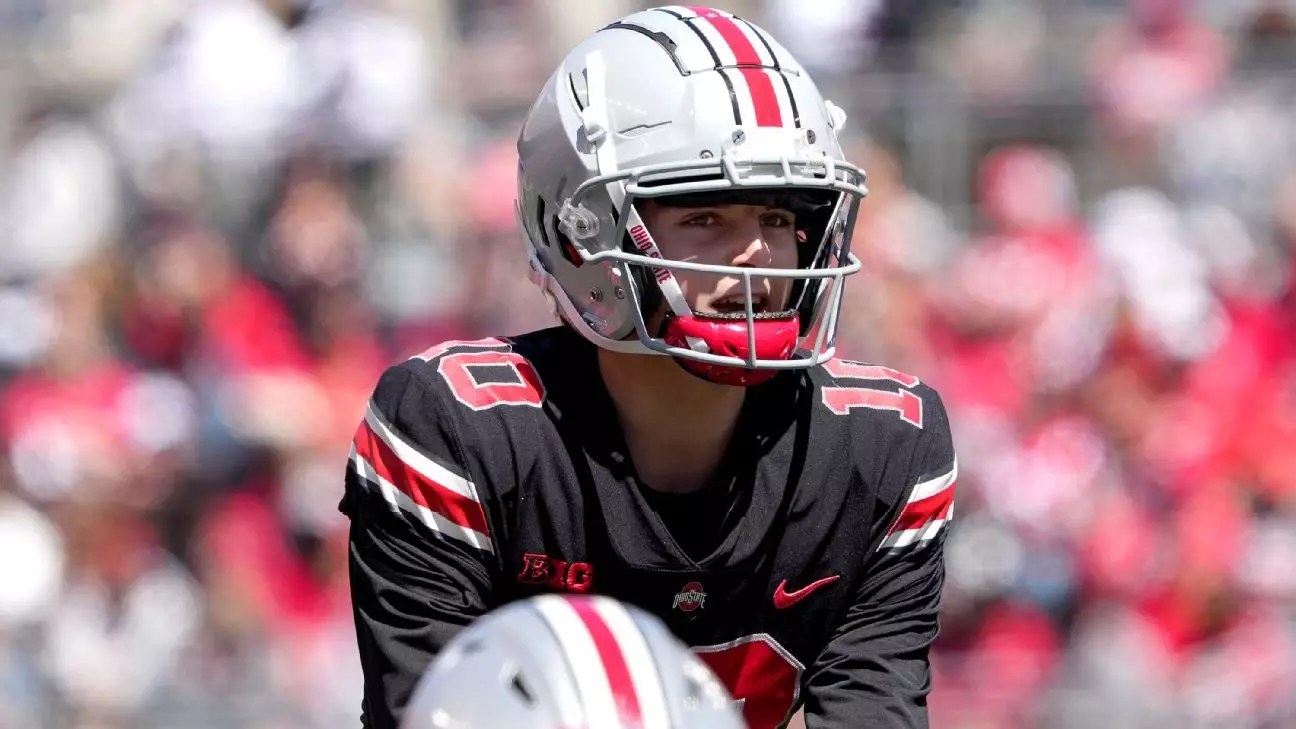The announcement that Julian Sayin will start as Ohio State’s quarterback for the season opener against No. 1 Texas triggers more skepticism than enthusiasm. While coach Ryan Day emphasizes “consistency” and “growth,” beneath these words lies an unsettling reality: the Buckeyes are putting their hopes on a young player whose brief college experience and limited game time cast doubt on their confidence in his readiness. The decision feels more like banking on potential than on proven excellence, risking more than it secures. It exemplifies a broader issue in college football—coaches often elevate untested talent to the starting role out of tradition, marketing, or ego, rather than proven competence. Such choices can backfire spectacularly, especially against the stiff competition from a team like Texas, which boasts resilience and a national profile that Ohio State must match or exceed.
The Hype Versus Reality
Julian Sayin, ranked No. 9 nationally among recruits, carries significant promise but hardly a guarantee for success at this level. His transfer from Alabama—a program known for its own quarterback challenges—may seem like an escalation, but it’s more an act of chasing a brighter spotlight rather than an assured path to victory. Coach Day highlights a “close competition” and “consistent play,” yet the fact remains that Sayin’s college stats are sparse: just 84 yards in four appearances. He’s a blank canvas, more hope than history, which makes his promotion somewhat of a gamble. Ohio State’s decision to favor youthful optimism over seasoned experience indicates a troubling trend: reliance on potential rather than proven maturity, risking alienation of more experienced players like Lincoln Kienholz, who, despite limited recent game film, demonstrated enough to challenge for the position.
Playing It Safe or Playing It Recklessly?
The narrative of Ohio State’s choice centers on “growth” and “development,” but what about strategic prudence? Against an elite team like Texas, this approach teeters on the edge of recklessness. The Buckeyes’ recent focus on practice metrics and “consistency” can be misinterpreted as superficial measures of readiness—they do not guarantee game-day performance. In the high-stakes environment of college football, decisions driven by hope often overshadow those based on proven ability. The coaching staff’s optimism may distract from the harsh truth: a young quarterback’s inexperience could be their Achilles’ heel when facing a formidable opponent. A more conservative strategy might involve leaning on Lincoln Kienholz’s experience or even activating a more multifaceted offensive approach that doesn’t hinge entirely on Julian Sayin’s success.
The Portrait of a Program in Transition
Ohio State appears to be painting a picture of forward momentum, yet the cracks are evident beneath the surface. Elevating an untested signal-caller just one game into the season reveals insecurity and a lack of concrete contingency plans. It also exposes a potential overemphasis on recruiting rankings—an alluring but often misleading measure of future performance. The coach’s assurances that Kienholz is “ready to play” but is relegated to backup duty suggest a subtle but significant internal doubt. The pressure to perform in these moments exposes the fragility of the team’s long-term confidence. Ohio State risks becoming a program that over-optimizes its future prospects, neglecting the pragmatic need for steady, reliable leadership that can truly withstand the intense rigors of college football’s top-tier competition.
The Cost of Overestimating Talent
Ultimately, the decision to start Julian Sayin highlights a broader cultural issue in college athletics: the obsession with recruiting high-profile players and trusting potential over performance. This trend fosters a cycle of impatience and overreliance on raw talent, often at the expense of the development of seasoned players who could offer stability. Ohio State’s choice to prioritize youth and hype over experience reveals an internal contradiction—aspiring to be a national champion while risking their season on an unproven quarterback. It’s a gamble rooted in hope, but hope isn’t a strategy. As the season unfolds, the true test will be whether this bold front conceals deeper organizational anxieties or reflects genuine confidence in their developmental pipeline.

